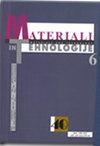MAGNETICALLY CONTROLLED GROWING RODS FOR THE TREATMENT OF EOS: EXPERIENCE FROM A SINGLE CENTER AND XPS SURFACE ANALYSIS OF THE RODS
IF 0.8
4区 材料科学
Q4 MATERIALS SCIENCE, MULTIDISCIPLINARY
引用次数: 0
Abstract
The treatment of early-onset scoliosis (EOS) remains one of the biggest challenges in paediatric orthopaedics. Magnetically controlled growing rods (MCGRs) have increased in popularity compared to traditional growing rods (TGRs), providing curve correction, spinal growth and a reduction of the associated surgical trauma. Between May 2015 and July 2022, 24 patients with EOS were treated with an MCGR system using a standardized implantation procedure. An ultrasonography- or radiography-controlled distraction of 3 mm every 3 months was performed. Whole spine radiographs were taken pre-operatively, post-operatively, and in six month interval. The Cobb angle, T1-S1 height, and growth were measured. All the patients had a dual-rod construct implantation. The mean age of the surgical patients was 8 years (6–11), and the mean follow up was 39 months (2–84). The etiology of the EOS was syndromic in six patients, congenital in two, idiopathic in three and neuromuscular in 12. One patient had a conversion from TGR, and one patient had a concomitant resection of hemivertebra. The mean preoperative Cobb angle was 69° (30–108°), postoperative was 38° (16–66°), and 38° (9–69°) at final follow-up. The mean pre-operative T1–S1 length was 289 mm, increasing to 326 mm post-operatively, and 353 mm at the final follow-up. The mean spinal growth was 64 mm (26–110 mm). Two retrieved rods were examined using X-ray photoelectron spectroscopy (XPS). A surface analytical technique to determine the surface chemistry after exposure of the rods in the body. The MCGR system represents a safe and less invasive option for the treatment of EOS.磁控生长棒的治疗:从单中心和XPS表面分析棒的经验
早发性脊柱侧凸(EOS)的治疗仍然是儿科骨科面临的最大挑战之一。与传统的生长棒(tgr)相比,磁控生长棒(mcgr)越来越受欢迎,提供曲线矫正,脊柱生长和减少相关的手术创伤。2015年5月至2022年7月期间,24名EOS患者接受了MCGR系统的标准化植入治疗。每3个月进行一次超声或x线片控制的3mm牵张。术前、术后及间隔6个月拍摄全脊柱x线片。测量Cobb角、T1-S1高度和生长情况。所有患者均行双棒植入。手术患者平均年龄8岁(6-11岁),平均随访39个月(2-84岁)。EOS的病因为6例综合征,2例先天性,3例特发性,12例神经肌肉性。1例患者从TGR进行了转换,1例患者同时切除了半椎体。术前平均Cobb角为69°(30-108°),术后平均Cobb角为38°(16-66°),最终随访时平均Cobb角为38°(9-69°)。术前T1-S1平均长度为289 mm,术后增加至326 mm,最终随访时为353 mm。脊髓平均生长64 mm (26 ~ 110 mm)。用x射线光电子能谱(XPS)对两根回收棒进行了检测。一种表面分析技术,用于测定暴露在体内的金属棒后的表面化学性质。MCGR系统是治疗EOS的一种安全且侵入性较小的选择。
本文章由计算机程序翻译,如有差异,请以英文原文为准。
求助全文
约1分钟内获得全文
求助全文
来源期刊

Materiali in tehnologije
工程技术-材料科学:综合
CiteScore
1.30
自引率
0.00%
发文量
73
审稿时长
4-8 weeks
期刊介绍:
The journal MATERIALI IN TEHNOLOGIJE/MATERIALS AND TECHNOLOGY is a scientific journal, devoted to original papers and review scientific papers concerned with the areas of fundamental and applied science and technology. Topics of particular interest include metallic materials, inorganic materials, polymers, vacuum technique and lately nanomaterials.
 求助内容:
求助内容: 应助结果提醒方式:
应助结果提醒方式:


